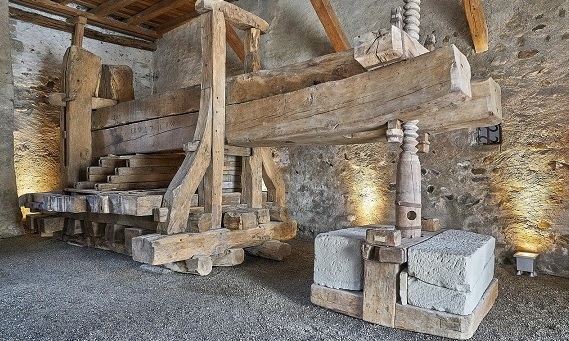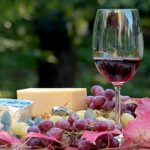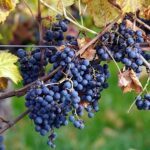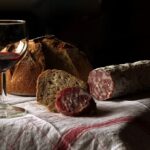
If you’ve ever dreamed of strolling through hillside vineyards, sipping crisp Riesling at the source, and talking wine with passionate producers – Germany’s wine regions are waiting. But German wine tourism is a bit different from other countries. While France and Italy might offer grand châteaux or sprawling estates, Germany gives you cozy tasting rooms, family-run wineries, and a strong sense of place.
This guide will walk you through how to plan a wine-focused trip in Germany, including what to expect at tastings, how to navigate local customs, and where to go for the most memorable experiences. From hidden Mosel vineyards to festive Palatinate wine villages, here’s how to do it right – like a local.
What Makes Wine Tourism in Germany Unique?
German wine culture is humble, focused on quality, and deeply rooted in regional identity. Tasting rooms are often small, personal, and run by the winemakers themselves. Appointments are common, especially at top estates, and you won’t always find an English-speaking host – but you will find warm hospitality and expert craftsmanship.
- No Napa-style bars or souvenir shops: Germany’s wineries often look like homes or farmyards.
- Focus on education and terroir: Tastings are designed to show how soil, slope, and vintage influence the wine.
- Seasonal experiences: From spring barrel tastings to autumn harvest festivals, every visit is different.
Planning Your German Wine Trip: Where to Begin
Germany has 13 wine regions, but the most tourist-friendly and scenic are:
- Mosel: Known for elegant Riesling, steep slate slopes, and fairy-tale villages.
- Rheingau: Historic estates and powerful dry Rieslings near the Rhine.
- Pfalz: Warm, sunny region with red wines, festivals, and the famous Deutsche Weinstraße (German Wine Route).
- Baden: Focuses on Spätburgunder (Pinot Noir) and Burgunder varieties, near the Black Forest.
Each offers a different experience – the Mosel feels quiet and romantic, Pfalz is sunny and social, Rheingau is traditional and refined, and Baden is adventurous and food-friendly.
For a full overview, see: Germany’s Wine Regions: A Traveler’s Guide to Rhine and Mosel Valleys
Tasting Room Etiquette: Do’s and Don’ts
To make the most of your visit – and avoid awkward moments – here are key etiquette rules:
1. Make an Appointment In small towns and family-run wineries, tastings often require booking ahead. Even places with “open” hours appreciate notice.
2. Don’t Expect a Menu Tastings are often curated by the host. You might be offered 3–6 wines, typically moving from dry to sweet. Just relax and follow their lead.
3. Ask Questions, Show Interest Germans appreciate sincerity and knowledge. Ask about the vineyard, the soil, the year. Even basic German phrases go a long way.
4. Expect Modest Surroundings The wine is the star – not the décor. Tastings might happen in a cellar, barn, or kitchen-like space.
5. Tipping is Not Expected – But Buying is There’s no fee at many tastings, especially if you buy a bottle or two. If you don’t plan to purchase, be honest and grateful.
Common German Wine Words to Know
- Weinprobe = wine tasting
- Weingut = winery
- Trocken = dry
- Feinherb = off-dry
- Spätburgunder = Pinot Noir
- Straußwirtschaft = seasonal wine tavern
Get label help here: German Wine 101: Grape Varieties, Label Terms, and What to Drink
Best Wine Tourism Experiences in Germany
1. Mosel Valley Wine Walks and Tastings Combine hiking or cycling with tastings in Bernkastel-Kues, Traben-Trarbach, or Zell. Some routes pass directly through vineyards, with tasting stations along the way.
2. Cruise and Taste Along the Rhine Base yourself in Rüdesheim or Bacharach and explore by boat. Many towns have central wine bars offering flights from multiple producers.
3. Deutsche Weinstraße (German Wine Route) Drive or bike this famous 85 km route through the Pfalz. Visit traditional villages like Deidesheim, Wachenheim, and Bad Dürkheim.
4. Harvest Volunteering and Grape Picking Some estates welcome guests to join the harvest – usually late September to early October. It’s hard work, but a great way to bond with winemakers.
5. Wine and Spa Weekends in Baden Pair Pinot Noir with thermal baths in places like Baden-Baden or Bad Krozingen. Baden also boasts some of Germany’s best food and wine pairings.
6. Winter Cellar Tastings and Christmas Markets Visit Traben-Trarbach for its underworld cellar Christmas market. Sip Spätburgunder in candle-lit caves and browse local crafts.
Plan by season: When to Visit German Wine Country: Seasons, Festivals, and Travel Tips
How to Get Around
- By car: Best for flexibility. You’ll need a designated driver (or spit!).
- By bike: Great in Mosel and Pfalz, with flat trails and riverside paths.
- By train: Many wine towns are well-connected. Ideal for day trips and slow travel.
- Wine tours: Guided group tours or private drivers are increasingly available, especially near Mainz, Koblenz, and Frankfurt.
German Wine Festivals: When Locals Celebrate
Germany’s wine festivals (Weinfeste) are one of the best ways to experience local culture.
Top Wine Festivals
- Bernkasteler Weinfest (Mosel): Fireworks, parades, and open wineries
- Mainzer Weinmarkt (Rheinhessen): Park setting, crafts, and tasting tents
- Rüdesheimer Weinfest (Rheingau): Traditional and scenic
- Bad Dürkheimer Wurstmarkt (Pfalz): Technically a wine fest – despite the name!
Most festivals run July–October and offer free entry, affordable tastings, and local food.
For more: Exploring the Rhine Valley: Castles, Riesling, and Romantic Wine Towns
Wine Shopping and Shipping Tips
- Buy direct from wineries: Better prices and advice
- Most ship abroad: Ask about international delivery – many estates can ship to the US, UK, or Canada
- Bring a wine suitcase: Handy if you’re flying home
- Look for rare finds: Small-lot wines never exported outside Germany
How Much Should You Taste?
A typical tasting includes 4–6 wines, with 50–100 ml pours. Spitting is fine – especially if you’re driving or visiting multiple estates. Ask if the tasting is free with purchase. Many small Weinguts offer complimentary tastings if you buy even one bottle.
How to Dress and Behave
- Smart casual is perfect
- Be respectful, not flashy
- Listen attentively and don’t dominate the host’s time
- Use basic German greetings (Guten Tag, Danke)
Key Takeaways
- Plan your route by region and make appointments where possible
- Know your label terms: Trocken, Spätlese, GG, etc.
- Be ready to taste in rustic, authentic settings
- Festivals and wine taverns offer easy cultural entry points
- Respect local etiquette: quiet curiosity over loud criticism
Explore the Full Series:
- Germany’s Wine Regions: A Traveler’s Guide to Rhine and Mosel Valleys
- Mosel Magic: Germany’s Most Scenic River for White Wine Lovers
- German Wine 101: Grape Varieties, Label Terms, and What to Drink
- When to Visit German Wine Country: Seasons, Festivals, and Travel Tips
- Exploring the Rhine Valley: Castles, Riesling, and Romantic Wine Towns
- Wine Festivals in Germany: Learn about the vibrant wine culture of the Rhineland.
Savor Every Sip – and the Story Behind It
Germany’s wine regions are more than beautiful – they’re alive with centuries of tradition, quiet innovation, and deep pride. When you taste at the source, you’re not just sampling grapes – you’re getting to know families, histories, and landscapes. So take your time, be curious, and raise your glass to exploring like a local.







